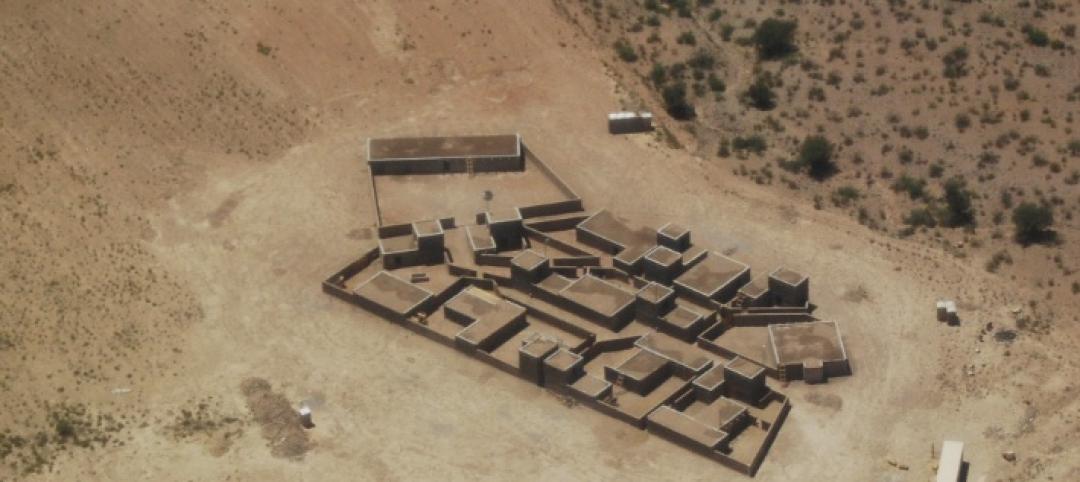The average amount of space per office worker globally has dropped to 150 square feet or less, from 225 square feet in 2010, according to a recent global survey conducted by CoreNet Global, a leading association of corporate real estate managers at large companies throughout the world. The study is part of CoreNet Global's ongoing advocacy of quality working environments and work experiences, and the group's call to action to measure quality of life per square foot.
At the same time, companies in the survey indicated that employment levels will increase in the second half of 2013—triggering a "property paradox," in which more workers are using less individual space.
The survey underscores how today's increasing mix of workers in the office and teleworking, assigned to team and individual projects, along with the rapid emergence of space-on-demand, co-working and other 'third places,' is combining to enable the balance of less space per office worker while more jobs are added.
Because of these fast-changing trends, CoreNet Global continues to advocate that companies create and implement workplace strategies that are integrated with the goals and business plans of the enterprise and that address the needs of employees and the type of work that is being performed.
Nearly two-thirds of companies responding to the survey report the average space per person is currently 150 square feet or less. Slightly over half of the respondents project an average of 100 square feet or less per worker as the norm in five years.
A leading factor is the monumental shift among corporate offices toward open space floor plans with fewer assigned cubes and assigned individual offices. In the survey, more than 80 percent of the respondents said their company has moved in this direction.
However, that trend too, may be reaching an endpoint. In the survey, 43 percent of the respondents say that they now have more collaborative space, than heads-down, private space where employees can focus. And that might be a problem: one-half of the respondents either agreed or said they were not sure if companies in general are over-building collaborative space at the expense of focus work and privacy (31 percent agreed; 19 percent not sure).
Also in the survey, nearly 60 percent projected increases in employment at their companies during the second half of 2013, only 11 percent projected a decrease.
"Through this survey, and anecdotally, we are hearing of a 'collaborative space bubble,'" said Richard Kadzis, Vice President, Strategic Communications for CoreNet Global. "Just as we have escaped the 'cube farms of Dilbertville,' some employees may start to feel that the open-space pendulum has swung too far, at the expense of a worker's ability to concentrate without interruption or distraction."
Multiple variables come into play, including the corporate brand, corporate culture, technological capabilities of the company, nature of the work performed, and cost. "We advocate that corporate real estate and workplace executives approach workplace management as a holistic practice starting at the C-suite level," Kadzis added.
"Workplace strategy is no longer a singular function of real estate, but a product of taking into account the needs and demands of the business, and how real estate should work with human resources, information technology, finance and other support functions to support overall organizational planning," Kadzis said.
The survey reveals how more than two-thirds of companies have instituted integrated workplace strategies.
About CoreNet Global
With more than 7,900 members, CoreNet Global is the world's premier association for corporate real estate (CRE) and workplace professionals, service providers, and economic developers. For more information, visit www.corenetglobal.org.
Related Stories
| Mar 11, 2011
Construction of helicopter hangars in South Carolina gets off the ground
Construction is under way on a $26 million aviation support facility for South Carolina National Guard helicopters. Hendrick Construction, the project’s Charlotte, N.C.-based GC, is building the 111,000-sf Donaldson Hangar facility on the 30-acre South Carolina Technology & Aviation Center, Greenville.
| Mar 8, 2011
Afghan village in New Mexico desert wins job order contracting award
The New Mexico Institute of Mining and Technology saved three months and at least $300,000 building a replica of an Afghan village and marketplace for anti-terrorism training in Playas, N.M. With clients registered to use the facility before construction began, its owner chose job order contracting because work could begin quickly and a proven contractor working on another project could be used.
| Feb 22, 2011
Military tests show copper increases HVAC efficiency, reduces odors
Recent testing, which is being funded by the Department of Defense, is taking place in military barracks at Fort Jackson, South Carolina. Side-by-side comparisons demonstrate that air conditioning units made with copper suppress the growth of bacteria, mold, and mildew that cause odors and reduce system energy efficiency.
| Feb 11, 2011
Justice center on Fall River harbor serves up daylight, sustainable elements, including eucalyptus millwork
Located on historic South Main Street in Fall River, Mass., the Fall River Justice Center opened last fall to serve as the city’s Superior and District Courts building. The $85 million facility was designed by Boston-based Finegold Alexander + Associates Inc., with Dimeo Construction as CM and Arup as MEP. The 154,000-sf courthouse contains nine courtrooms, a law library, and a detention area. Most of the floors have the same ceiling height, which will makes them easier to reconfigure in the future as space needs change. Designed to achieve LEED Silver, the facility’s elliptical design offers abundant natural daylight and views of the harbor. Renewable eucalyptus millwork is one of the sustainable features.
| Feb 7, 2011
GSA Unveils New Sustainable Workplace Design Tool
The U.S. General Services Administration launched its Sustainable Facilities Tool on Monday, Feb. 7. The innovative online tool will make it easier for both government and private-sector property managers and developers to learn about and evaluate strategies to make workplaces more sustainable, helping to build and create jobs in America’s clean energy economy of the future.
| Jan 21, 2011
Combination credit union and USO center earns LEED Silver
After the Army announced plans to expand Fort Bliss, in Texas, by up to 30,000 troops, FirstLight Federal Credit Union contracted NewGround (as CM) to build a new 16,000-sf facility, allocating 6,000 sf for a USO center with an Internet café, gaming stations, and theater.
| Jan 21, 2011
Sustainable history center exhibits Fort Ticonderoga’s storied past
Fort Ticonderoga, in Ticonderoga, N.Y., along Lake Champlain, dates to 1755 and was the site of battles in the French and Indian War and the American Revolution. The new $20.8 million, 15,000-sf Deborah Clarke Mars Education Center pays homage to the French magasin du Roi (the King’s warehouse) at the fort.












